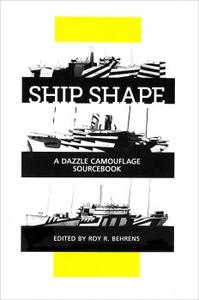Roy R. Behrens - Ship Shape: A Dazzle Camouflage Sourcebook: : An Anthology of Writings About Ship Camouflage During World War I
Bobolink Books | 2012 | ISBN: 0971324476 | English | 380 pages | PDF | 205.9 MB
Bobolink Books | 2012 | ISBN: 0971324476 | English | 380 pages | PDF | 205.9 MB
This is an anthology of twenty-six all but unknown writings about World War I ship camouflage, published during and after the war. They were written by various authors, including the camouflage artists themselves. These are supplemented by brief eyewitness comments from the same era, and rare historic ship photographs, diagrams and news clippings. An unprecedented research collection, the book concludes with a 40-page camouflage bibliography, the largest ever compiled on that subject (not just ship camouflage). Most of the articles are about “high difference” or “disruptive” camouflage, a counter-intuitive method in which ships were painted in brightly colored abstract shapes, which made them conspicuous but difficult to aim at. This practice captured the imagination of the public. It became known by such names as “dazzle camouflage,” “baffle painting,” “jazz painting” and “parti-coloring.” In publications at the time, it was frequently compared to Modern-era styles of art, including cubism, futurism, vorticism and surrealism. Wartime news articles claimed that dazzle camouflaged ships looked like crazy-quilts, “sea-going Easter eggs,” barber poles, painted Jezebels—and even, the delirium tremens. Did dazzle camouflage actually work? It is often assumed that it did not, because, if for no other reason, there is supposedly no scientific evidence from World War I to prove it was effective. But among the documents in this new book is an account of postwar “laboratory experiments” at MIT that appear to confirm that—not only did it work—it worked far better than anyone thought.



